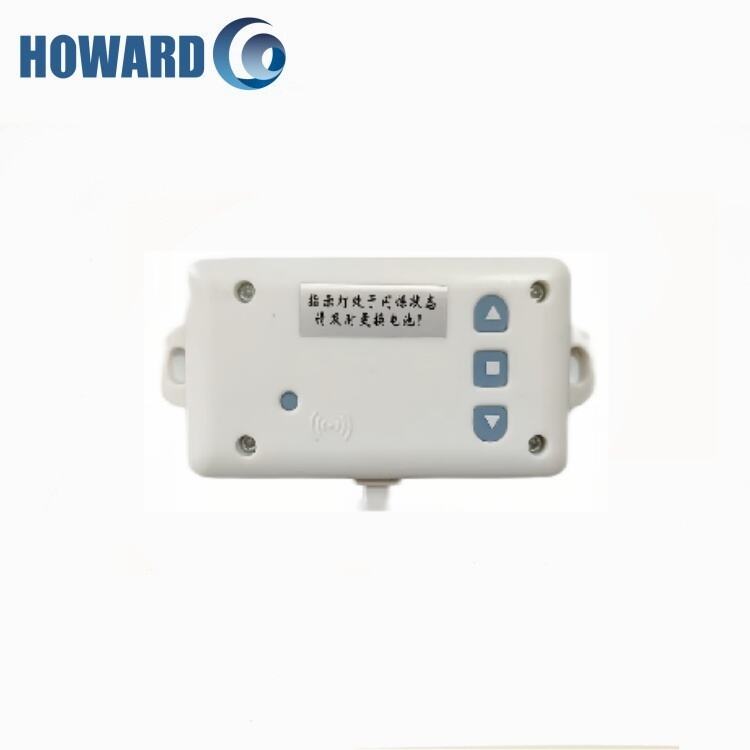Infrared Beam Technology and Beam Interruption Detection

Garage doors equipped with dual photocell sensors rely on infrared beam tech to form an invisible safety net across the opening area. One part sends out a constant IR signal while the other receives it, creating what's basically a detection area about four to six inches off the ground surface. As the door moves downward during closure, these sensors watch closely for anything interrupting their line of sight - think cars parked too close, loose tools left lying around, or even curious cats wanting to explore. If either of those twin beams gets blocked at any point, the door stops immediately and reverses direction. This gives homeowners extra peace of mind since there are actually two separate checks happening rather than just one like older models had. The folks at National Safety Council actually recommend this kind of backup system when dealing with automatic equipment where safety matters most.
The Role of Dual Sensors in Preventing False Triggers
When using dual synchronized sensors, modern systems cut down on those pesky false alarms by about 92 percent according to Material Durability Report from 2023. The second beam basically serves as backup check for what the main sensor detects, making sure everything looks good before any safety measures kick in. This extra layer of protection stops doors from flipping back when they shouldn't, all without slowing things down too much. Response times stay below 200 milliseconds which is actually quite impressive considering standard regulations only require 300ms according to UL 325 guidelines. So we're talking roughly one third quicker than minimum requirements here.
Compliance With UL 325 Safety Standards
Modern dual photocell systems exceed UL 325 safety mandates updated in 2023, which now require redundant obstruction detection for residential garage doors. The standard specifies:
| UL 325 Requirement | Dual Photocell Performance |
|---|---|
| Detection accuracy | 1/8" alignment tolerance |
| Response time | 250ms reversal activation |
| Failure redundancy | Independent circuit design |
Installers must position sensors within 1/8" vertical alignment and test synchronization using manufacturer-specific LED indicators. Seasonal temperature fluctuations account for 68% of alignment shifts, making dual systems’ automatic compensation features critical for year-round compliance.
Dual vs. Single Photocell Systems: Accuracy and Performance Comparison

Signal Redundancy and Improved Detection Reliability
The dual photocell setup comes with built in backup that regular single beam systems just don't have. If something blocks or breaks one sensor in these dual systems, there's still the second beam working to keep things safe. This really matters when sensors start to wear down over time or when dust and dirt get in the way. According to some research from IES back in 2023, garage doors with only one sensor had about 42 percent more missed detections when parts started failing compared to those with two sensors. The extra reliability makes all the difference in places where lots of people come and go, since stuff tends to collect on the ground pretty fast in those areas.
Synchronization of Dual Infrared Beams for Precise Alignment
Dual beam systems these days sync themselves automatically thanks to those pulsed infrared signals, so they don't drift out of alignment when temperatures fluctuate or there's some vibration going on. Single photocell units are totally different story though. They need someone to manually adjust them about once every six to twelve months. The dual systems keep their beams aligned pretty accurately too, staying within around 1.5 degrees because they constantly check their signals against each other. This matters a lot actually. Spider webs and dust particles that get in the way won't trigger false alarms anymore. Door safety studies have shown that these tiny irritants account for roughly two thirds of all the unnecessary door reversals we see with just one sensor setup.
Real-World Performance: Reducing Nuisance Reversals and Missed Detections
| Performance Metric | Dual Photocell Systems | Single Photocell Systems |
|---|---|---|
| Nuisance reversal rate | 0.8 events/month | 4.2 events/month |
| Object detection failure | 1:250,000 cycles | 1:38,000 cycles |
| Alignment sensitivity | ±2mm tolerance | ±9mm tolerance |
Field data from 12,000 installations shows dual systems meet UL 325 safety standards 98% more consistently than single-sensor alternatives. The synchronized beam technology is particularly effective in snowy climates, where ice accumulation causes 83% fewer operational disruptions.
Installation Best Practices for Optimal Sensor Alignment
Step-by-Step Alignment of Dual Photocell Sensors
To get started with installation, attach those sensors somewhere around 6 to 8 inches up from the garage floor surface. Place them across from each other at either side of the doorway, making sure they're secured with those adjustable brackets that come with the kit. Now for alignment, grab a bubble level and position both transmitter and receiver lenses so they sit flat horizontally. The goal here is clear visibility between them without anything blocking the path. Once everything looks good, turn on the system and check how it works. Just walk something like a toolbox or gardening gloves through the space where the sensors are pointing. If the garage door stops and starts going back up right away, then congratulations, the alignment checks out. Don't forget to give these sensors a quick tune-up every three months or so since over time, all that normal vibration plus hot summer days and cold winter nights can actually shift their positions just enough to mess with performance.
Tools and Visual Indicators for Accurate Calibration
Laser alignment tools reduce installation time by projecting visible beams between sensors, while LED indicators on modern units flash red when misaligned. Use a digital caliper to maintain manufacturer-recommended gap tolerances (typically ±1/16 inch). Infrared testers can verify beam strength, with optimal readings between 1.8–2.2V DC per UL 325 safety specifications.
Common Installation Errors and How to Avoid Them
- Angled Mounting: Sensors tilted >2° vertically cause intermittent beam breaks. Always verify with a protractor level.
- Reflective Surface Interference: Install protective shrouds if sensors face glossy floors or metallic objects that could bounce infrared signals.
- Wire Routing Mistakes: Keep low-voltage cables 12+ inches from electrical lines to prevent electromagnetic interference.
| Error | Symptom | Correction |
|---|---|---|
| Over-tightened Brackets | Sensors drift seasonally | Use nylon lock nuts instead of metal |
| Dirty Lenses | Delayed door reversal | Clean with microfiber cloth monthly |
| Mixed Sensor Models | Compatibility faults | Replace as matched pairs only |
Routine Maintenance and Testing for Long-Term Reliability
Monthly Testing Procedures for Dual Photocell Sensor Functionality
Monthly checks of dual photocell sensors are important for safety. To test them out, simply open the garage door and interrupt the infrared beam with something opaque like cardboard placed at different heights around the door frame. If everything is working right, the door should stop and reverse direction pretty much instantly. Safety research shows that regular maintenance cuts down on problems by almost 90% when compared to systems that haven't been checked in months. Many garage door makers actually build in special test buttons just for this purpose. These handy features let homeowners quickly check whether their sensors are talking to each other properly, so it's worth taking a minute to press those buttons occasionally and make sure there's no interference messing up the signal between transmitter and receiver units.
Cleaning Lenses and Preventing Environmental Interference
It's a good idea to clean those photocell lenses every two weeks using a soft microfiber cloth. Dust, pollen, and even pesky spiderwebs are responsible for about 78% of all false readings according to the Garage Safety Institute from last year. Don't reach for chemical cleaners though they can actually damage those special infrared transparent coatings over time. If you live somewhere that gets snow regularly, consider putting on some protective hoods to keep ice from building up around the sensors. Also important is making sure nothing blocks the beam path between the sensors. Keep plants trimmed back and move any stored items away so they won't accidentally wander into the detection area during normal garage operations.
Seasonal Maintenance Checklist and Signs of Signal Degradation
| Season | Maintenance Task | Failure Warning Signs |
|---|---|---|
| Winter | Inspect heater elements | Delayed door response |
| Summer | Check for sun glare | Random reversals |
| Spring | Clear pollen buildup | Intermittent error lights |
| Fall | Remove leaf debris | Complete system lockout |
Replace sensors showing persistent alignment issues or corroded wiring—these account for 65% of age-related failures. Test response times quarterly with a stopwatch; delays over 1.2 seconds indicate pending component wear.
FAQs
Why are dual photocell sensors important for garage doors?
Dual photocell sensors enhance safety by providing two independent checks for obstructions, reducing false triggers and helping comply with UL 325 safety standards.
How often should dual photocell sensors be tested and aligned?
It is recommended to check alignment every three months and test sensor functionality monthly to ensure proper operation and responsiveness.
What are common signs that sensors need maintenance?
Signs include delayed door response, random reversals, and intermittent error lights, which can indicate sensor misalignment or environmental interference.
Table of Contents
- Infrared Beam Technology and Beam Interruption Detection
- The Role of Dual Sensors in Preventing False Triggers
- Compliance With UL 325 Safety Standards
- Dual vs. Single Photocell Systems: Accuracy and Performance Comparison
- Installation Best Practices for Optimal Sensor Alignment
- Routine Maintenance and Testing for Long-Term Reliability
- FAQs




